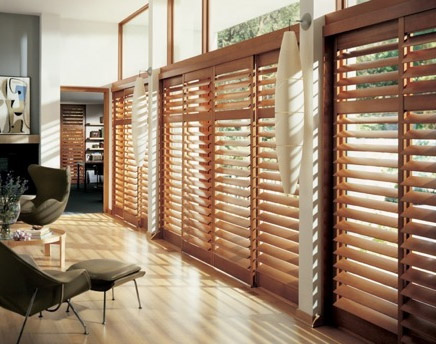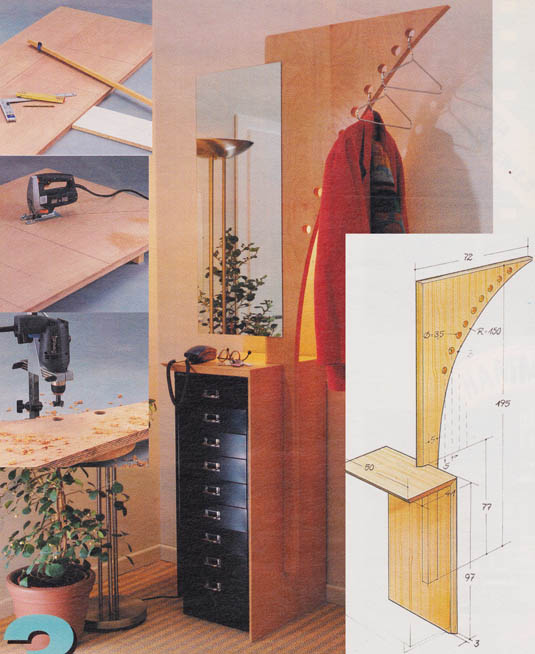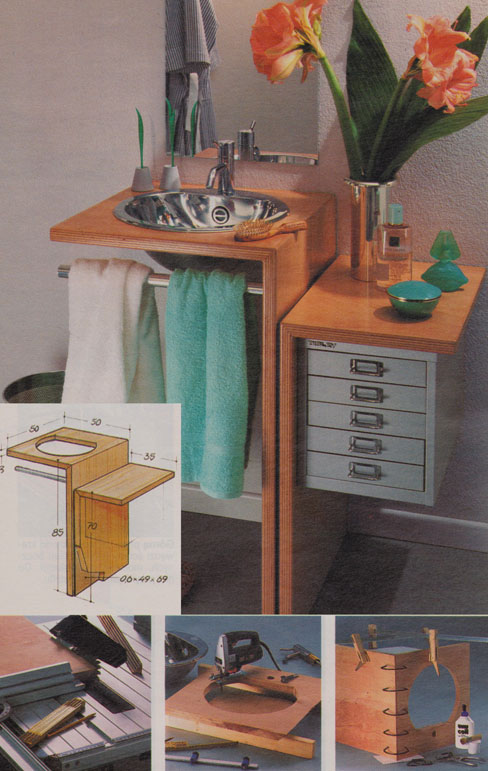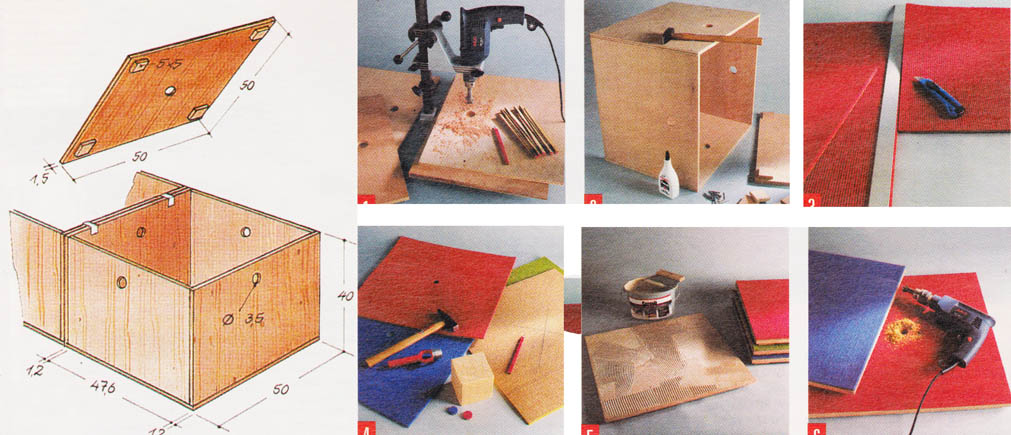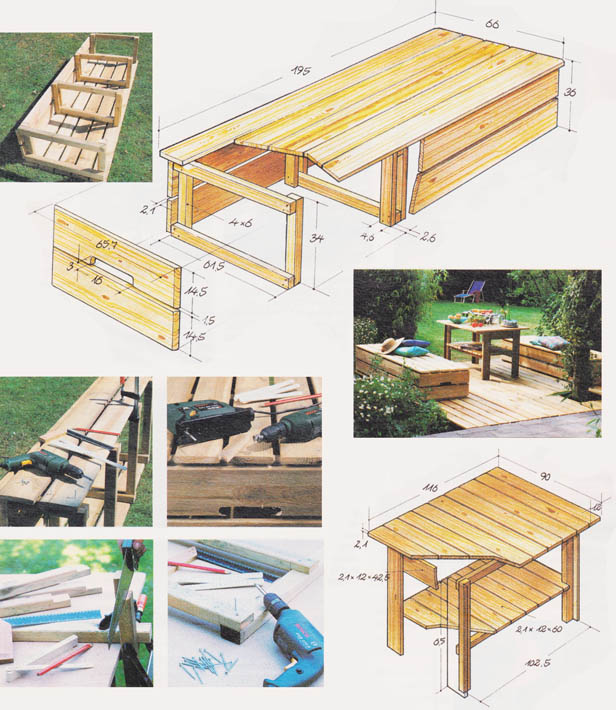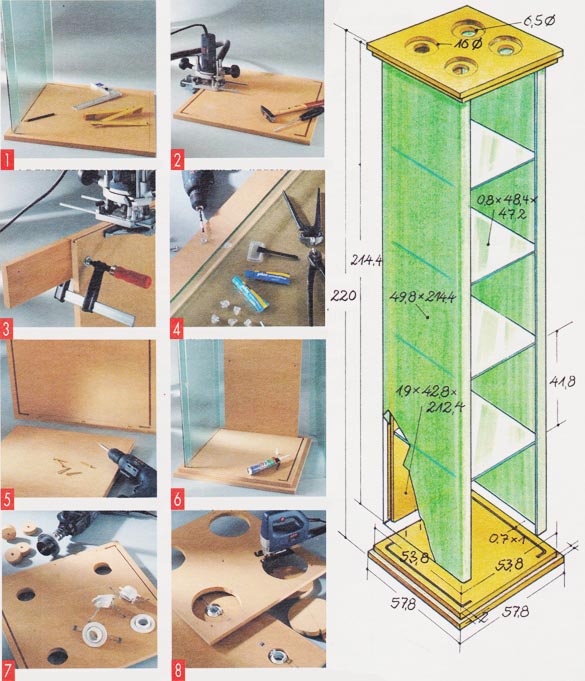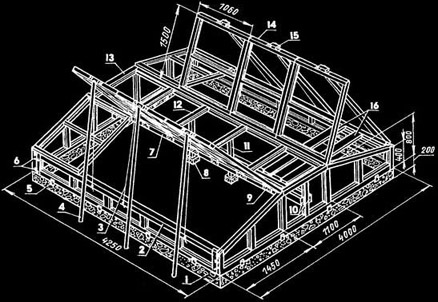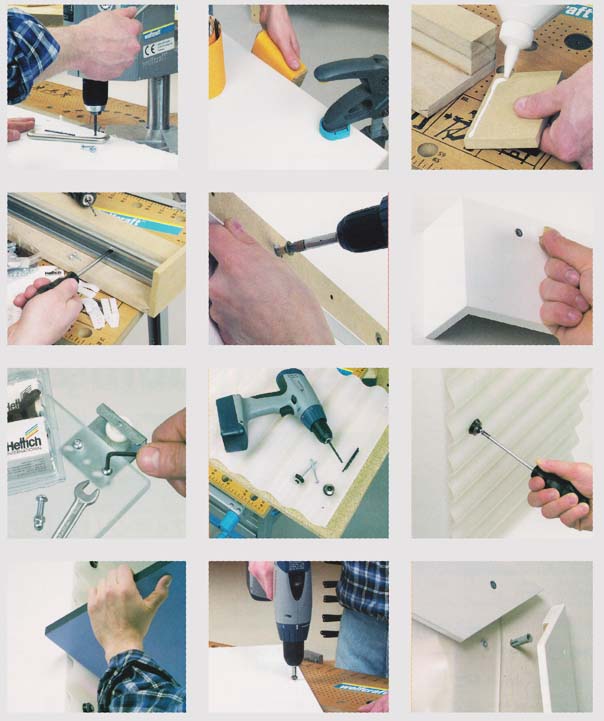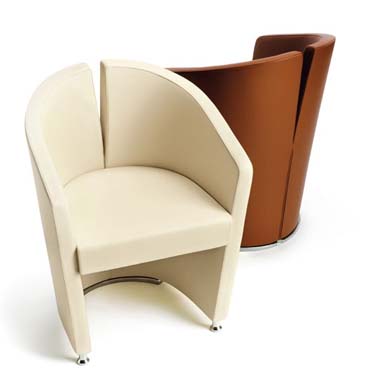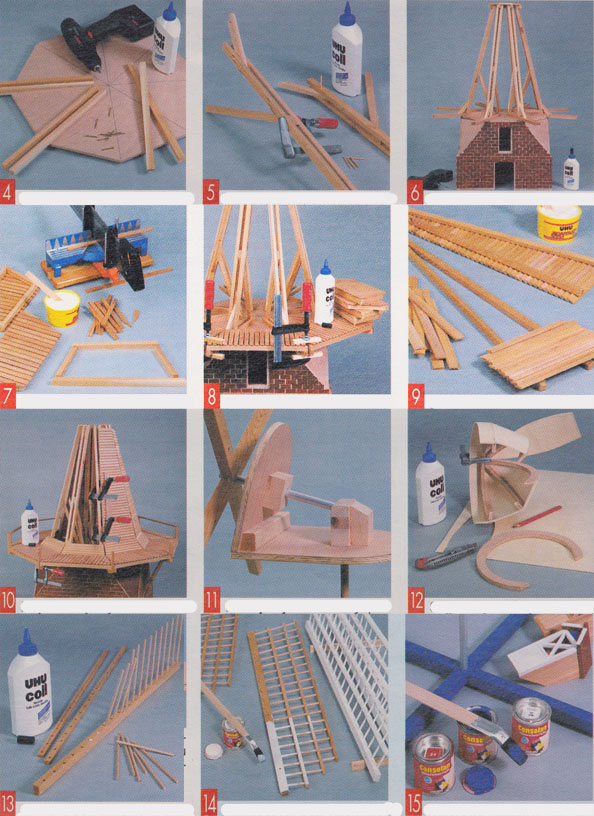 Cedrowe drewno wygląda szlachetnie i jest odporne. Olicowanie wiatraka stanowią deski ułożone na wspornikach niczym łuski i przyklejone do nich. Obrotowa nakładka składa się z segmentów wyciętych w postaci łuku, przyklejonych do płyty mniejszej podstawy. Do ukośnie ściętej ściany czołowej i do płyty podstawy mocujemy układ prowadzenia oraz kozioł łożyskowy aluminiowego wału koła ze skrzydłami. W koźle łożyskowym wkleiliśmy od dołu prostopadłą oś obrotową wykonaną z okrągłego drewnianego pręta. Pokrycie nakładki stanowi wodoodporna sklejka o grubości 2 mm.
Cedrowe drewno wygląda szlachetnie i jest odporne. Olicowanie wiatraka stanowią deski ułożone na wspornikach niczym łuski i przyklejone do nich. Obrotowa nakładka składa się z segmentów wyciętych w postaci łuku, przyklejonych do płyty mniejszej podstawy. Do ukośnie ściętej ściany czołowej i do płyty podstawy mocujemy układ prowadzenia oraz kozioł łożyskowy aluminiowego wału koła ze skrzydłami. W koźle łożyskowym wkleiliśmy od dołu prostopadłą oś obrotową wykonaną z okrągłego drewnianego pręta. Pokrycie nakładki stanowi wodoodporna sklejka o grubości 2 mm.
Skrzydła wiatraka składają się ze skrzyżowanych listew, połączonych w środku na nakładkę, na których osadziliśmy konstrukcję powierzchni skrzydeł, wykonaną z okrągłych prętów i deseczek. Ruch obrotowy skrzydeł powstaje wskutek częściowo ukośnego rozmieszczenia otworów na pręty. Wiatr powoduje napięcie wodoodpornego materiału naciągniętego na skrzydła.
4. Podwójne belki są przyklejone do ośmiokątnej płyty. Odległości między belkami dokładnie odpowiadają grubości wsporników.
5. Podwójne wsporniki są sklejone z podporami jako elementami dystansowymi. Aby elementy były równe, przygotowujemy szablon.
6. Wsporniki wklejamy w nacięcia belek i przygotowujemy przeciwelement do płyty podstawy, umieszczony po drugiej stronie.
7. Segmenty podłogi galerii składają się z desek naklejonych na ramie. Narożniki ramy przycinamy na ukos.
8. Układamy poszczególne segmenty i przyklejamy je do podwójnych belek. Wklejamy słupki między końcami belek a balustradą.
9. Listwy pokrycia układamy tak, aby pasowały między wsporniki. Potem naklejamy deski i przycinamy je na właściwą szerokość.
10. Dopasowujemy olicowanie i przyklejamy je do wsporników. Aby mieć dostęp do wnętrza, dwa pola pozostawiamy nie oklejone.
11. Naklejamy i wiercimy prowadnicę oraz kozioł łożyska wału wiatraka. Oś obrotu nakładki osadzamy od dołu.
12. Segmenty sklejki tworzą rusztowanie dachu nakładki. Dopasowujemy pasy sklejki, naklejamy je i mocujemy taśmą klejącą.
13. Otwory pod okrągłe drążki wiercimy w elementach skrzydeł tak, aby po zmontowaniu umożliwiały obracanie się skrzydeł.
14. Najlepszym pokryciem elementów z bukowego drewna (np. drążków) jest farba odporna na wpływy atmosferyczne.
15. Kolorowe akcenty na oknach, drzwiach i głównym krzyżu skrzydeł malujemy farbą odporną na wpływy atmosferyczne.
Skrzydła obciągamy płótnem żaglowym. Żagiel najlepiej uszyć z włókniny z tworzywa sztucznego, które nie nasiąknie podczas deszczu. Oczka do jego przywiązania nabijamy za pomocą specjalnych kleszczy.

